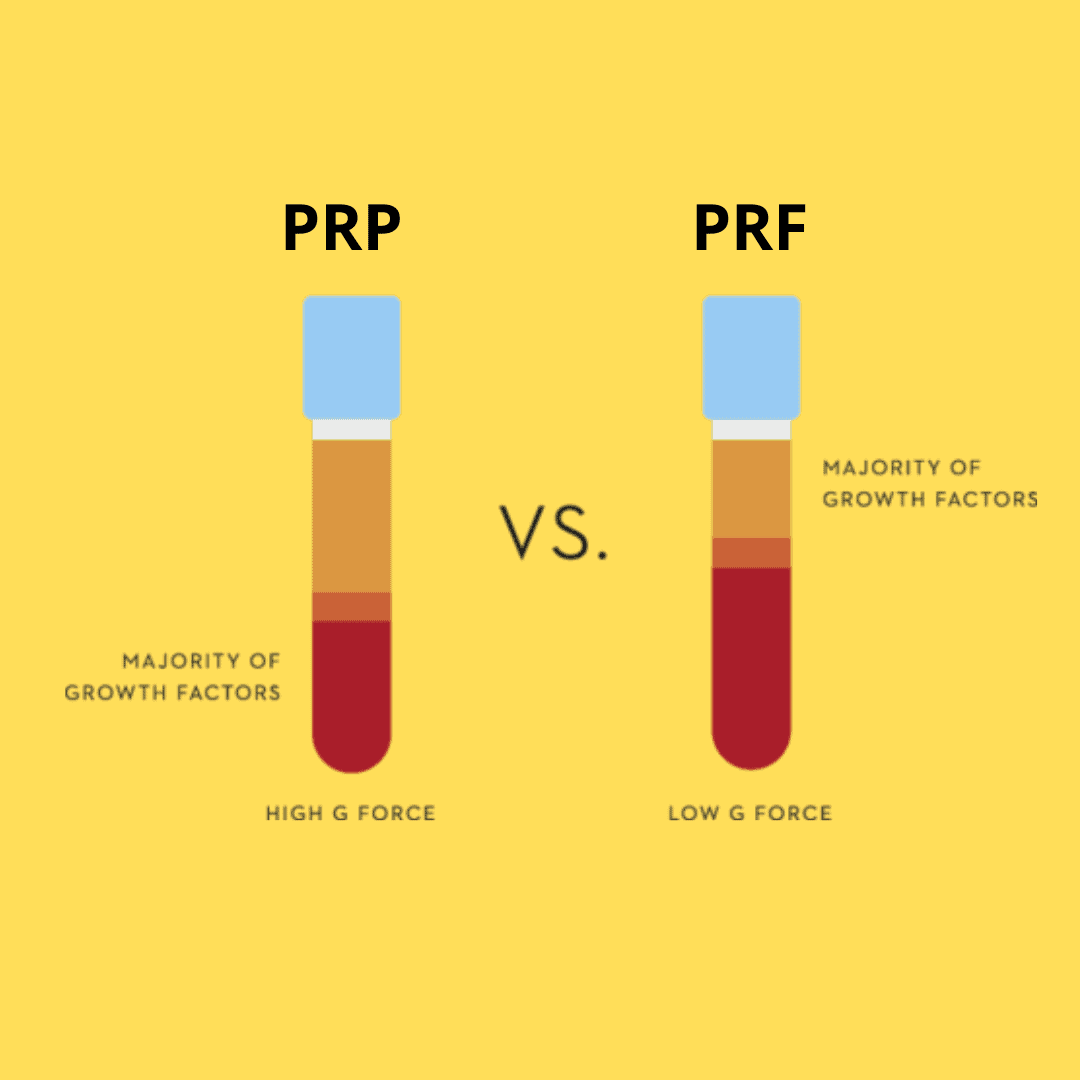
Difference Between PRP, PRF and PRGF

PRF is a 100% autologous biomaterial, it accelerates wound healing and tissue regeneration, increases stimulation of osteogenesis and new blood vessel formation. PRF contains approximately 10 times more platelet concentration than normal blood, therefore having great healing and regenerative properties.
PRP
Platelet-rich plasma (PRP) is a first generation platelet concentrate aimed to improve tissue repair. It is a gel at high concentration of autologous platelets suspended in a small amount of plasma after centrifugation of the blood of the patient. PRP has some significant disadvantages: the preparation protocol is expensive, complicated, and very operator-dependent, and the need for animal thrombin as a coagulant raises legal issues in some countries.The short duration of cytokine release and its poor mechanical properties have resulted in search of new material.
PRGF
Plasma Rich in Growth Factor (or PRGF) is a type of plasma enriched of proteins and circulating growth factors able to aid the bone and soft tissue regeneration. PRGF contains many different cells and cell-types highly concentrated in a gelatinous form which can be placed into the site of the injury: these cells stimulate and accelerate the healing process by forming blood clots and releasing growth factors into the wound. PRGF does not need bovine or human thrombin for coagulation, however it necessitates Calcium Chloride to be added to PRGF. PRGF includes plasma proteins and coagulative factors and is then more advantageous compared to PRP.
PRF
Platelet Rich Fibrin (PRF) is a modern, natural platelet concentrate, it is achieved with a simplified preparation, with no biochemical manipulation of blood. This technique does not require anticoagulants or bovine thrombin (or any other gelling agent). This feature makes this product easily usable, with a low rate of mistakes during the preparation stage. The blood taken, approximately 10 ml in tubes without anticoagulant, is immediately centrifuged. The fibrinogen is initially concentrated in the upper part of the tube but, upon the contact with thrombin normally present in the blood, it is converted into fibrin. The platelets are retained into the meshes of fibrin.
Conclusion
Advantages that shows to PRF compared to PRP and PRGF:
- greater simplicity of production
- absence of blood manipulation
- no additives
- PRF produces a larger share of blood product over the share of blood taken
- contains more healing factors
- more stem cells, less trauma
- more capacity to generate angiogenesis

